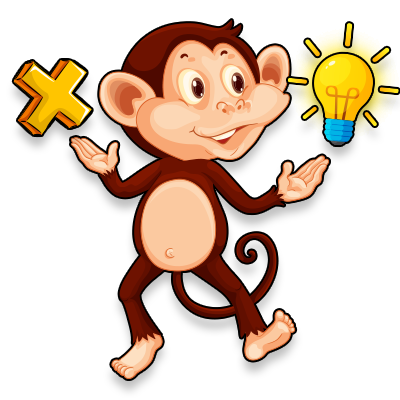Let’s Learn!
How can using the distributive property help us find the area of a rectangle?
Goal:
Goal:

Think About It!
Goal: Relate the area of a rectangle to multiplication and addition.
Caleb is helping his dad figure out locations for helicopters of different sizes to land. He makes a grid to determine how much space is needed. Each helicopter also needs space for passengers to exit. Let's help Caleb figure out if there is enough space in the field.

A map broken up into grid squares. The grid is blocks across and 10 blocks down. Using this grid will help Caleb to determine the different sizes of places to safely land the helicopter.
Recall that area is the number of unit squares needed to cover a flat surface. It is the entire amount of space inside a space or figure, like the space under a helicopter.
Area is described in square units. A square unit is a unit, or tile, that is the shape of a square, having the same length and width. There are different units that can be used to measure unit squares. For example, a rectangle could be measured in square feet (ft), square inches (in), square meters (m), or square centimeters (cm).
Click the words to see how area and unit squares are related.
Area
the number of squares needed to cover a flat surface.

A grid, row 1 : Numbers 1 , 2, 3 row 2 : Numbers 4 , 5, 6 row 3 : Numbers 7 , 8 , 9 The area equals 9 square units.
Unit Square
a unit, or tile, that is the shape of a square and has the same length and width. A unit square is written as in\(^{2}\), cm\(^{2}\), mm\(^{2}\), km\(^{2}\) or sq. units.

A grid, row 1 : Numbers 1 , 2, 3 row 2 : Numbers 4 , 5, 6 row 3 : Numbers 7 , 8 , 9 1 unit by 1 unit is 1 square unit.
Caleb knows that he can use the length and width of the space to determine the area of the space being used.
Multiplication is similar to repeated addition. You are multiplying the number of groups by the number in each group. When you need to find the area of a rectangle, you will multiply the number of square units in the length by the number of square units in the width. The length is how long the shape is. The width is how wide the shape is.

A grid of 3 squares wide and 3 squares tall. The length is labels the top row from left to right. The width labels the top to bottom.
In other words, area = width \({\times}\) length, or area = \({w \times l}\).

3 grids. Each grid is a 3 by 3 square grid. The first grids first row is counted 1,2, and 3. The top row is labelled L for length. \({\times}\) The second grid, with a first column labelled 1,2 and 3. The column is labelled with W for width. \({=}\) a grid that is completed. first row 1,2,3, second row 4,5,6 and the third row 7,8,9. \({3 \times 3 = 9}\)
If A \({=}\) \({w \times l}\), then area \({=}\) 3 units \({\times}\) 3 units \({=}\) 9 square units.
Think of it as 3 groups with 3 tiles in each group.
When you use the distributive property, you multiply each addend by a number and then add the products.

An array of 4 columns and 6 rows of circles. below the array there is a math equation. \({6 \times 4}\) The 4 can be broken down into \({(2 + 2)}\) From this we can build new equations using the distributed property. \({(6 \times 2) + (6 \times 2) = 24}\)24 is circled in red. There is an array pointing to how the arrays would be shown using the distributed property. An array of 2 columns and 6 rows of circles. There is a second array of 2 columns and 6 rows of circles. This shows how the equation is solved \({(6 \times 2) + (6 \times 2)}\) this solves to \({12 + 12 = 24}\) 24 is circled in red
Let’s go back to Caleb’s problem. A helicopter needs a space of 5 units by 6 units, and the passengers need a space of 5 units by 2 units.

A grid of 8 columns and 5 rows. The grid shows the size of the space that the helicopter needs to land. 6 columns across and 5 rows is marked in orange to show how much of the 8 by 5 grid the space would be. The remaining 2 columns by 5 rows is colored in blue showing how much of the grid is left over after using the space for the helicopter.
To find the total area, you need to calculate the area of the helicopter plus the area of the passengers.
5 units times 6 units \({+}\) 5 units times 2 units

The first equation is \({5 \times (6 + 2) = 5 \times 6 + 5 \times 2}\) \({5 \times 6 = 30}\) and \({5 \times 2 = 10}\) \({30 + 10 = 40}\) 40 square units is the answer. The number 40 is circled in red.
40 square units are needed for the helicopter and passengers!
Let’s see how we can help Caleb and his dad figure out the area needed for different helicopters to land at the showcase!